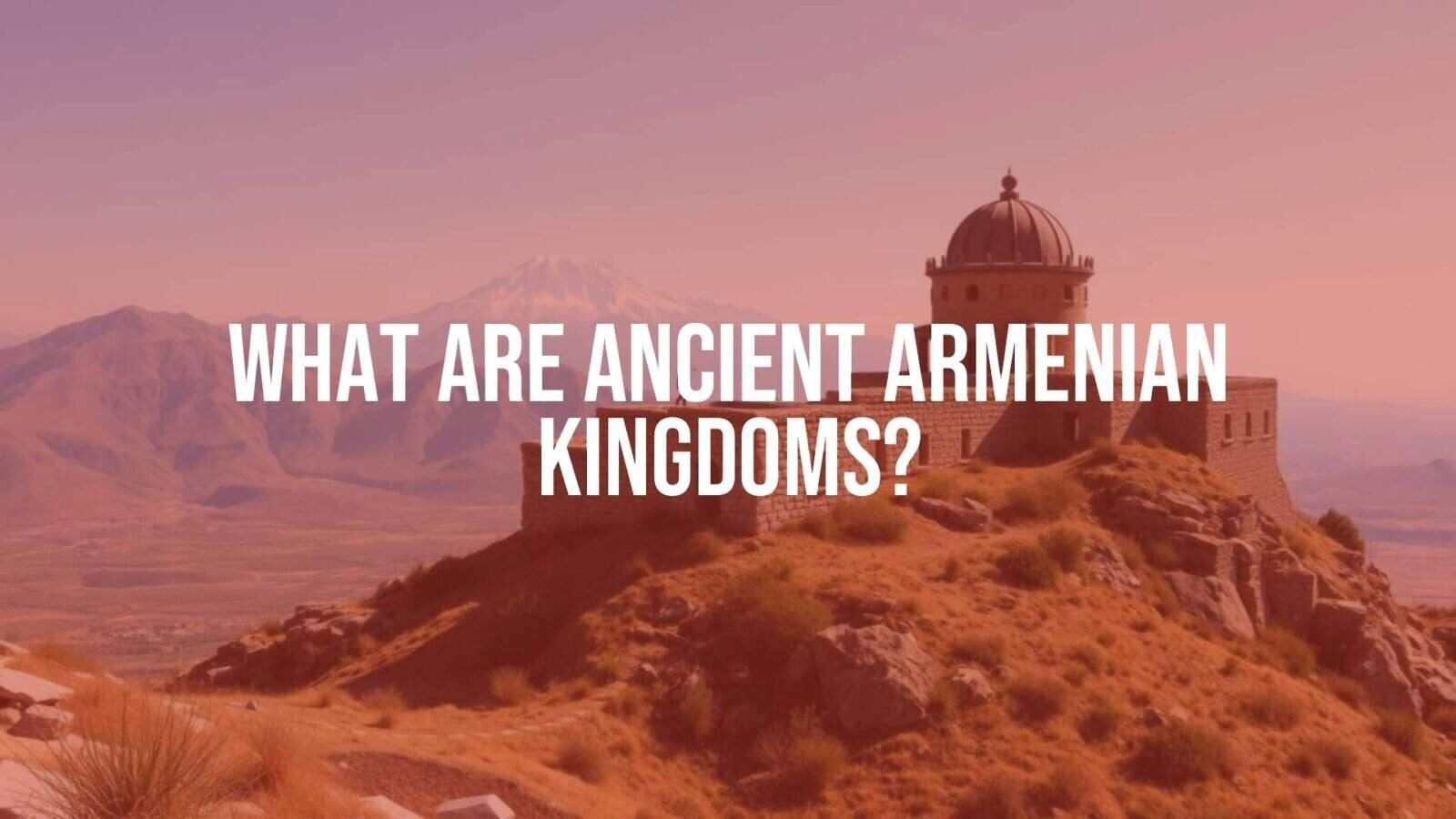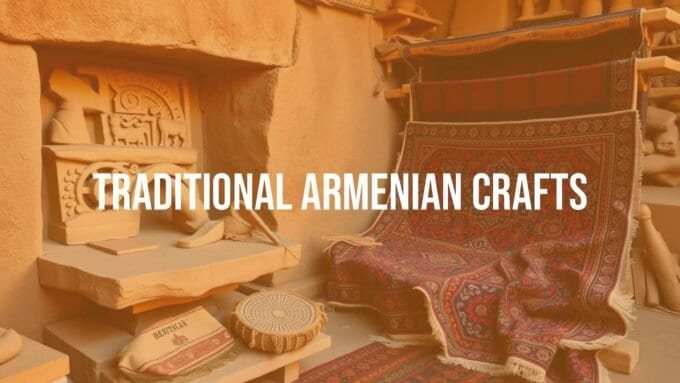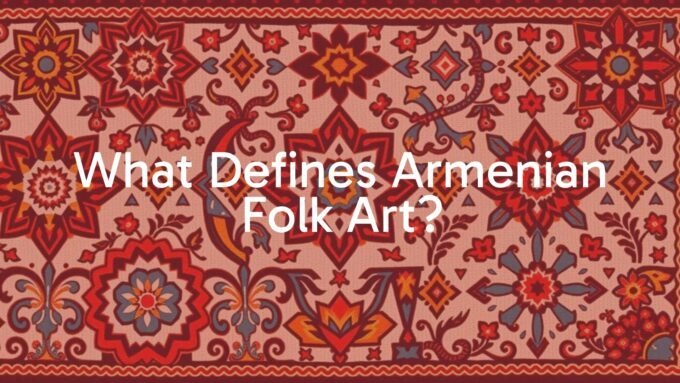Ancient Armenian kingdoms were a series of states that rose in the Armenian Highlands from about the 6th century BCE to the 5th century CE, with later revivals in medieval times. These states helped shape Armenian identity, culture, and government while dealing with a difficult political map between major empires such as Persia, Rome, Byzantium, and the Sassanids. Their story is one of survival, creativity, and smart diplomacy, laying the base for the Armenian nation known today.
This long history covers around a thousand years of change, marked by new dynasties, important capitals, and a unique cultural and religious tradition. From early tribal groups to later divisions, these kingdoms left a lasting mark on the region and its people.
The Geographic Setting of Ancient Armenia
These kingdoms grew in the South Caucasus, across fertile plateaus and mountains around Mount Ararat, often called the Armenian Highlands. The location sat at the meeting point of major trade routes linking the Greek world with Bactria, India, and the Black Sea. This brought wealth and cultural exchange but also made Armenia a border zone and a target for nearby empires.
The area held rich minerals-gold, silver, copper, and iron-which raised its value. Urartu, for example, was famous for expert metalwork like bronze cauldrons, showing both skill and resources. Many rivers and strong mountain pastures supported vineyards and livestock, especially horses, which became a key part of Armenian military power.

Timeline of Major Armenian Kingdoms
Ancient Armenian history includes several dynasties and political structures. After the fall of Urartu, the name “Armenia” appears in the 6th century BCE. The Orontid dynasty first ruled as satraps of the Achaemenids, later claiming independence.
The Artaxiad dynasty followed, reaching its high point under Tigranes the Great in the 1st century BCE, when Armenia briefly held lands from the Caspian to the Mediterranean. The Arsacid dynasty then ruled for centuries and oversaw Armenia’s adoption of Christianity. This period ended in 428 CE with the removal of the last Arsacid king and the division of Armenia between Byzantium and the Sassanids, leading into the medieval era.
| Dynasty/State | Dates (approx.) | Highlights |
|---|---|---|
| Urartu (Van/Biainili) | 9th-6th c. BCE | Early state in the Highlands; advanced engineering; major cities like Tushpa and Teishebaini |
| Orontid (Yervanduni) | 6th-3rd c. BCE | Satraps under Achaemenids; later kings; set up an Armenian state |
| Artaxiad (Artashesian) | 189-1st c. BCE | Expansion under Tigranes the Great; capitals at Artashat and Tigranocerta |
| Arsacid (Arshakuni) | 52-428 CE | Parthian-linked dynasty; Armenia adopts Christianity |
Which Dynasties and Kingdoms Shaped Ancient Armenia?
The story of ancient Armenia features several ruling houses and states, each shaping culture, politics, and society in its own way. Armenia grew from tribal groups into a strong power, and later a Christian kingdom, while dealing with pressure from larger neighbors.
Hayasa-Azzi and the Earliest Armenian Polities
Before formal kingdoms, the Highlands held tribal unions and early states. One of the most important was Hayasa-Azzi (about 1500-1200 BCE), near Mount Ararat and parts of today’s eastern Turkey. Many link the name “Hay” (what Armenians call themselves) and “Hayastan” to this group.
Hayasa-Azzi and others-Shupria, Nairi, and Mushki-played a big part in the formation of the Armenian people. These groups mixed with neighbors, often for defense against powers like the Hittites and Assyrians, setting the stage for later, more centralized states.
The Kingdom of Urartu: Rise and Influence
From these early groups rose Urartu (Van/Biainili), the first recorded state to control much of the Highlands. Formed in the 9th century BCE near Lake Van, it united nearby tribes and began to bring them together. References to the “Mountains of Ararat” in ancient texts point to Urartu’s lands, showing its deep roots.
Urartu was an Iron Age power with skilled builders and record keepers, using aqueducts, dams, and cuneiform. Trade routes and mineral wealth fueled growth, bringing rivalry with the Neo-Assyrian Empire. Its culture showed in bronze art and a rich pantheon led by Haldi, a war god. Cities like Tushpa (Van), Argishtihinili (Armavir), and Teishebaini (Yerevan) rose in this time. Urartu fell in the 6th century BCE, opening the way for a state called “Armenia.”
The Orontid Dynasty: Satrapy to Sovereignty
The Orontid dynasty (Yervanduni) marked an important turning point, linking Urartu’s legacy to later Armenian states. From the 6th to 3rd centuries BCE, the Orontids ruled as satraps under the powerful Achaemenid Empire while keeping many local traditions.
After Alexander the Great defeated Persia in 331 BCE, Armenian satraps began to act independently. By 321 BCE, as Macedonian control weakened, the Orontids became kings. Orontes III declared independence, forming the Kingdom of Armenia. Following the Battle of Magnesia (190 BCE), the Seleucids lost ground to Rome, and Armenian independence grew stronger. The last Orontid, Orontes IV, fell around 201/200 BCE, but the Armenian state they built endured.
The Artaxiad Dynasty: Expansion and the Age of Tigranes the Great
The Artaxiad dynasty (Artashesian), founded in 189 BCE by Artaxias I, brought a golden age. Likely linked to the Orontids, Artaxias I united the Highlands, took Yervandashat, and founded Artashat (Artaxata) near the Araxes River. Its spot on major trade routes made it a busy center of trade.
Under Tigranes II, called Tigranes the Great (r. 95-55 BCE), Armenia became one of the strongest states in the Roman East, with lands briefly from the Caspian Sea to the Mediterranean. He reunited Sophene, took lands from the Seleucids and Parthia, and wore the crown of Syria. He built Tigranocerta with grand Hellenistic style. Though his empire was short-lived, it left a strong legacy, and his name, Tigran (Dikran), remains common among Armenians.

The Arsacid Dynasty: Parthian Ties and the Spread of Christianity
The Arsacids (Arshakuni) took power in 52 CE and ruled until 428 CE. As a branch of the Parthian royal family, they often stood between Rome and Parthia, both backing different claimants. The Treaty of Rhandeia (63 CE) tried to settle this by having a Parthian Arsacid rule Armenia as a Roman vassal.
During this time came the biggest change in Armenian history: the adoption of Christianity as the state religion. In 301 CE (or 314 CE in some sources), Tiridates III, guided by Saint Gregory the Illuminator, made Armenia the first state to do so. This choice set Armenia apart from Zoroastrian Persia and tied national identity closely to the Christian faith. Arsacid rule ended in 428 CE with the removal of the last king, and Armenia was divided between Byzantium and the Sassanids.

Mamikonian and Bagratuni Dynasties
After the Arsacid monarchy fell and Armenia was split, the Mamikonian and later the Bagratuni families played important roles in preserving Armenian identity and bringing back self-rule. The Mamikonians were leading nobles with strong military influence since the 1st century BCE. By the late 4th century CE, a Mamikonian usually held the hereditary post of grand marshal (sparapet), leading the army and often serving as regent. They guided the state within limits set by Persian rulers and led the stand against forced Zoroastrianism at the Battle of Avarayr in 451 CE.
The Bagratuni dynasty rose in the 9th century, restoring an independent Armenian kingdom after long foreign control by Romans, Persians, and Arabs. In 885 CE, Ashot Bagratuni was crowned King of Armenia, starting a period of economic, religious, cultural, and political renewal. The Bagratids made Ani their capital in 961 CE, building a famous city known for its many churches and a population rivaling major European cities of the age. Internal troubles and outside threats grew, and the Bagratid kingdom fell to the Seljuk Turks in the 11th century.
The Medieval Armenian Kingdoms
Armenian Kingdom of Cilicia: Refuge and Renaissance
After the fall of the Bagratids in the Highlands, Armenian statehood lived on in the Kingdom of Cilicia on the Mediterranean coast. From 1080 to 1375 CE, Cilicia became a strong power. Armenians were present there as early as 96-95 BCE, and over time the area grew into a major principality.
In 1198 CE, with approval from Byzantium and Crusader leaders, Cilicia became a recognized kingdom. It served as a safe base for Armenian culture and a key partner during the Crusades, blending Eastern and Western ideas. Cilicia added much to Armenian art, literature, and law. Though it later fell to the Mamluks, Cilician Armenia marked a bright period of medieval Armenian rule and showed the lasting strength of Armenian identity.
What Were the Key Capitals and Provinces of Ancient Armenia?
The rise of Armenian kingdoms went hand in hand with their capitals and the way they organized their lands. These cities and provinces show the political map and also acted as places of culture, trade, and defense.
Major Capitals: Armavir, Artashat, and Dvin
Across the centuries, several cities became capitals, each tied to a specific time and purpose. They were not only places of government but also centers of the economy and culture.
Armavir, once the Urartian city of Argishtihinili, became capital in 330 BCE under Macedonian control. Built by Argishti I in 776 BCE on the Ararat plain, it was a key city for the Orontids. When the Arax River changed course and left the city without water, its role faded and a new capital was founded.
Artashat (Artaxata) was founded by Artaxias I in 185 BCE in Ostan, in historic Ayrarat. Set at the meeting of the Araks and Metsamor rivers near Khor Virap, Artashat was a carefully planned city. Greek writers Plutarch and Strabo tell a story that Hannibal advised Artaxias on its layout. Its spot on the Silk Road, linking Persia and Mesopotamia with the Caucasus and Asia Minor, made it a busy center for trade. Under Artaxias I, the city grew with bathhouses, markets, workshops, and government buildings, and later gained an amphitheater under King Artavasdes II. Artashat stayed important for centuries, and its ruins still show its past size and wealth.

Dvin, built by Khosrov III the Small in 335 CE on an older site, became the main home of Arsacid kings. With around 100,000 people in many trades, Dvin was a busy city. After 428 CE, it remained an administrative hub under Sassanid marzpans (governors), Byzantine officials, and later Arab ostikans. In 640 CE it became the center of the emirate of Armenia. Its palace held a Zoroastrian fire-temple built by the Sassanids, showing a mixed religious scene.
Another key capital was Tigranocerta (Tigranakert), founded by Tigranes the Great in the 1st century BCE. Built to sit near the center of his wide lands, it had about 120,000 people, many temples, and a Hellenistic-style amphitheater.
Vagharshapat (today Ejmiatsin/Etchmiadzin) was rebuilt and renamed by Vologases I (Vagharsh I) between 117-144 CE. It served as a capital between 120 and 330 CE and stayed the leading city until the late 4th century. With the adoption of Christianity, Vagharshapat became the spiritual center of Armenia, home to the Catholicosate. It hosted one of the oldest schools started by Saint Mashtots and the first manuscript library in Armenia (480 CE), making it a beacon of Armenian faith and learning.
Provinces and Political Geography
Armenia’s borders changed over time with expansion, loss, and outside pressure. To the east and north lay Caucasian Albania and Iberia, with the Kur River often marking the line. Rome lay to the west; Parthia and later the Sassanids to the south.
Greater Armenia was often described as having 15 provinces (though not all existed at the same time). In practice it held nearly 200 districts of different sizes. The traditional provinces were:
- Upper Armenia
- Sophene
- Aghdznik
- Turuberan
- Corduene
- Moxoene
- Nor Shirakan
- Vaspurakan
- Syunik
- Artsakh
- Paytakaran
- Utik
- Gugark
- Tayk
- Ayrarat
Lesser Armenia was separate and usually ruled on its own, and Armenian Mesopotamia also stood apart from the main kingdom.
In 189 BCE, many neighbors had taken Armenian lands. Artaxias I led campaigns to bring them back, winning Caspiane, Paytakaran, and Gugark in the east and north, and Karin, Ekeghik, and Derjan in the west. He also took Tmorik from the Seleucids in the south. Tigranes the Great later finished the reunification by adding Lesser Armenia, Corduene, and Sophene. At its largest under Tigranes, the kingdom included Iberia, Albania, Cappadocia, Cilicia, Armenian Mesopotamia, Osroene, Adiabene, Syria, Assyria, Commagene, Sophene, Judea, and Atropatene, with Parthia and some Arab tribes as vassals. This size made Armenia a major power, though for a short time.
How Did Ancient Armenian Kingdoms Govern and Wage War?
Government and warfare in ancient Armenia drew on local customs, Hellenistic ideas, and constant adjustment to strong neighbors. Kingship, noble families, and army organization all aimed to hold power and defend the land.
Political Systems and Royal Authority
Rule centered on kings who passed power through dynastic lines. The Orontids, Artaxiads, and Arsacids each had different levels of central control. Noble houses often backed the throne but could also limit it.
In the Hellenistic age, especially under the Artaxiads, some administration was centralized. Artaxias I expanded and strengthened his realm with reforms, such as boundary stones to mark property and royal power. Later, Tiridates the Great pushed more central control, reorganized provinces and governors, and carried out land surveys to improve taxes. The adoption of Christianity under Tiridates III also supported royal authority, with the king seen as God’s representative, which helped win loyalty from nobles and common people.
Role of Noble Families and Satraps
Noble houses, or nakharars, held large estates and their own troops. They were the backbone of the army and local rule but could pull against the crown. Tension between king and nakharars sometimes split the state, as with the discontent toward Arshak II, which helped bring about Armenia’s later division.
In earlier times under Persian and Seleucid control, Armenian leaders were often satraps. The Orontids began as Persian satraps, showing a model where local rulers governed while paying tribute to a greater power. Even after independence, strong regional nobles kept much local control, giving the Armenian state a “feudal” character.
Military Organization and Famous Armies
Armenia’s army was known for powerful cavalry, reaching its height under Tigranes the Great. Ancient writers like Josephus give very high numbers (likely too high), but they show how large and feared the army was.
The core was heavy cavalry-cataphracts-also used by Seleucids and Parthians. Roman writers praised Armenian horsemen for courage and fine horses and armor. The elite “Azatavrear” cavalry guarded the royal family and formed part of the court. In peacetime, cavalry units patrolled the borders under the sparapet. In war, Armenian cavalry might number 10,000 to over 20,000. Light cavalry, especially mounted archers, gave key support; Plutarch wrote that Armenian archers could shoot with deadly accuracy from 200 meters.

The infantry was also large. As with the Seleucids, foot soldiers made up most of Tigranes’ army. Some sources say 120,000 infantry with 12,000 mounted archers. These large forces often overwhelmed smaller neighbors, though the disciplined Roman legions were a tougher opponent.
Under Roman influence, two imperial units-Legio I Armeniaca and Legio II Armeniaca-formed in the 2nd or 3rd century CE to defend the area. They joined major campaigns, such as Emperor Julian’s Persian war in 363 CE, and later entered the Byzantine army, showing Armenia’s ongoing military role in wider regional conflicts.
Notable Military Leaders and Battles
Several commanders left their mark. Tigranes the Great is the most famous; his leadership and army built a short-lived but powerful empire and pushed Armenia’s borders outward.
Vardan Mamikonian led the Armenians at Avarayr in 451 CE against the Sassanids. The battle was a defeat on the field, but it became a symbol of Armenian faith and freedom. Vardan died in battle and was later made a saint. The Mamikonians stayed important in war and politics, with leaders like Mushegh and Manuel Mamikonian serving as regents and grand marshals, guiding strategy and defense.
Religion, Culture, and Language in Ancient Armenian Kingdoms
Ancient Armenia saw a rich mix of beliefs, arts, and language. Over time, the adoption of Christianity and the creation of a unique alphabet reshaped identity and daily life.
Pre-Christian and Zoroastrian Traditions
Before Christianity, Armenia followed a polytheistic religion with strong Iranian and Semitic ties, especially under late Parthian influence. Aramazd, like Ahura Mazda and linked to Zeus, led the pantheon. Other major gods were Anahit (fertility and birth, linked to Artemis and Aphrodite), Mihr (sun and light, like Persian Mithra; his temple at Garni still stands), and Vahagn (a storm and hero figure, tied to Iranian Verethragna).
Zoroastrianism was widespread, especially among the Arsacids. Tiridates I, the dynasty’s founder, was a Zoroastrian priest and traveled to Rome in 65-66 CE for his coronation by Nero, showing the faith’s role. Temples to these gods stood in cities like Armavir, Artashat, and Ashtishat.
The Rise of Christianity and Its Impact
The biggest change came with the adoption of Christianity. Tradition says the apostles Bartholomew and Thaddeus brought the faith in the 1st century CE. In 301 CE (or 314 CE in some accounts), Tiridates III, converted by Gregory the Illuminator, made Christianity the state religion, making Armenia the first country to do so-over a decade before Constantine’s conversion and the Edict of Milan.
This choice reshaped Armenian life. It placed Armenia apart from Zoroastrian Persia and supported a strong sense of state and people. The Armenian Church, led by figures like Saint Gregory, backed the throne and later helped protect unity. New churches rose-such as Etchmiadzin-and cities like Vagharshapat became spiritual hubs. There was also pushback and martyrdom, as at Avarayr, which became a lasting symbol of faith and national will.
Creation of the Armenian Alphabet
Christianity created a strong need for a distinct script. Before this, Armenians used Aramaic and Greek letters, which did not fit Armenian sounds well and made preaching and translating hard.
In 405 CE, Mesrop Mashtots, with Isaac of Armenia (Sahak Partev), created the Armenian alphabet. The main goal was to translate the Bible into Armenian, spreading the faith and strengthening culture. The first known sentence written by Mashtots, from Proverbs-“To know wisdom and instruction; to perceive the words of understanding”-captures the purpose. The new alphabet became a cornerstone of identity, uniting people with a common written language and preserving their heritage.
Art, Literature, and Mythology
Ancient Armenia supported lively arts and letters, though much from the pre-Christian era survives only in later quotes and summaries. Moses of Chorene (Movses Khorenatsi), a 5th-century historian, preserved many early texts and myths, including songs like the birth of Vahagn, which show strong oral traditions.
Art and architecture thrived. The Temple of Garni, dedicated to Mihr, shows Hellenistic style in Armenia and the blend of cultures. Capitals like Artashat and Tigranocerta also showed Hellenistic planning, with amphitheaters and large public buildings. After adopting Christianity, art turned to religious themes, and builders raised famous churches and monasteries that still stand.
Myths played a central role, especially the story of Hayk, the legendary founder and archer who defeated the giant Bel. These tales, along with a distinct language and later a shared Christian faith, built a strong identity that survived foreign rule and cultural change.
What Led to the Decline and Legacy of Ancient Armenian Kingdoms?
The record of ancient Armenia includes great power and rich culture, but also constant struggle for independence against larger empires. Outside pressure and inner tensions led to decline and division, yet Armenian identity grew stronger in the long run.
Foreign Invasions and Internal Divisions
Armenia’s place between rival powers brought frequent invasions. Rome and Parthia, and later Byzantium and the Sassanids, tried to control the throne or annex the land.
Examples include Roman and Parthian contests for Armenia, Emperor Trajan’s brief annexation in 114 CE (reversed by Hadrian), and Sassanid attacks from the 3rd century CE onward, including the 252 CE invasion. These wars destroyed cities like Artaxata and Dvin and caused heavy loss.
Inside the country, powerful nakharar families could weaken the crown. Their rivalries and shifting alliances opened the door to outside control. Their discontent helped end the Arsacid line in 428 CE, after which Armenia was split and independent rule ended for a long time.
Roman, Persian, and Byzantine Influence
Contacts with Persia, the Hellenistic world, Rome, and later Byzantium shaped Armenian government, culture, and war. From Achaemenid times, Persian culture and administration entered Armenia while local traditions stayed strong. Hellenistic ideas from the Seleucids influenced buildings and the arts, seen in cities like Tigranocerta.
Roman power, through client kings and campaigns, made Armenia a buffer. The Treaty of Rhandeia set a Parthian Arsacid as a Roman vassal on the throne. Roman units like Legio I and II Armeniaca also show this close tie. The Sassanids had the strongest push, promoting Zoroastrianism in conflict with Armenia’s new Christian identity, leading to pressure and war.
Armenia was divided in 387 CE and again in 428 CE into Byzantine and Sassanian zones. Western Armenia went to Byzantium; Eastern Armenia stayed a kingdom under Persia until a marzban replaced the king in 428 CE. Different rules and cultures followed in each part, yet the core Armenian identity lived on.
The Enduring Impact on Armenian Identity
Despite conquest and division, Armenian identity proved strong. Adopting Christianity in the early 4th century CE was the most important factor. It united the people and set them apart from Zoroastrian and later Muslim neighbors. The Armenian Church helped preserve language, memory, and a sense of nation.
Mesrop Mashtots’s alphabet (405 CE) was another major step. It allowed translations, built a national literature, and kept the language alive. This shared script and writing tradition became a base for culture over many centuries.
Heroes like Tigranes the Great and Vardan Mamikonian remain central to Armenian memory. Names of old kings-Yervand, Artashes, Arshak, Tigran-are still common, showing a link to the past. The memory of these kingdoms helped inspire later revivals, including Bagratid Armenia in the 9th century and the Kingdom of Cilicia. The struggles and achievements of ancient Armenia laid the ground for a lasting national spirit that continued even after the fall of its early states.
















Leave a comment